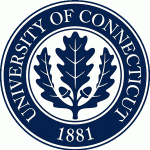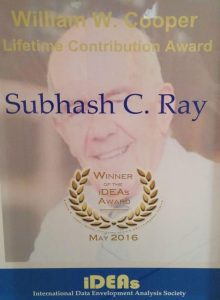Flagging economic growth and concerns about high unemployment have created a sense of urgency for mid-term election candidates as well as voters. The Fall 2010 issue of The Connecticut Economy: A University of Connecticut Quarterly Review analyzes several topics high on voters’ to-do lists, including job growth, tackling the state’s budget problems, reducing transportation bottlenecks, and increasing the competitiveness of Connecticut manufacturers.
The two major-party gubernatorial candidates, businessman Tom Foley (R) and Stamford mayor Dan Malloy (D), outline their goals for the economy in the issue’s “Forward Look” feature. Both candidates also addressed attendees at the September 8th press release event at the UConn Stamford campus, as part of the morning-long Fairfield County Economic Summit & Outlook symposium co-sponsored by CBIA, the Stamford Chamber of Commerce and the University of Connecticut.
Connecticut lawmakers managed to meet the constitutionally required “balanced budgets” for the current biennium (FY 2009/10 and FY 2010/11), yet the state still faces persistent structural deficits of about $3 billion per year, plus a roughly equal amount of unfunded liabilities for pension and retiree health insurance benefits promised to state employees. Noting, “This is not a problem we can simply wish away,” co-editor Arthur Wright sees this challenge as “Job One” for all state candidates.
With more than half of the state’s 1.6 million jobs concentrated in the Hartford and Bridgeport-Stamford market areas, commutes to work in these regions are often difficult and costly. Exploring how to make the journey to work more cost efficient – essential to stronger job growth in the state – Edward Deak, a professor of economics at Fairfield University, suggests several innovative traffic management solutions.
In election season, claims resurface that Connecticut is unfriendly to business. But co-editor Dennis Heffley and two colleagues, Professor Subhash Ray and Assistant Professor in Residence Lei Chen, challenge the state’s high-cost reputation in a study of manufacturing competitiveness that measures “overall unit costs” (labor, materials and energy, capital, and other costs such as temporary staff, data processing, advertising, and taxes and license fees). Using data from the 2007 Economic Census, the authors show that “high average wages do not necessarily imply high production costs.” Despite having the 4th highest wages for manufacturing production workers, Connecticut’s cost of producing a dollar’s worth of manufacturing output is 43rd highest among the 50 states. Only Oregon, North Carolina, Virginia, Arizona, New York, Wyoming, and New Mexico have a lower overall unit cost.
Analyzing voter turnout in 2006 – the last time Connecticut elected both a governor and a U.S. senator – Scott Condren, an economics major and Quarterly summer intern, examines the determinants of the earlier voter turnout (educational attainment, party affiliation, socioeconomic conditions, income, marital status, population density, and age) and discusses why the relative importance of some factors might change this year. He concludes that “…lessons from 2006 may not apply for 2010.” The centerfold of the current issue also maps the voter turnout percentage from the 2006 election and gives each town’s party registration breakdown.
Connecticut has not posted any significant nonfarm job gains in two decades. But when the self-employed are included in the count, the state’s job growth story changes. Steven Lanza, the Quarterly’s executive editor, finds that since the mid-1990s the ranks of the state’s self-employed have grown by 27,000 jobs annually. That’s a job growth rate of 1.3% per year, only slightly below the comparable U.S. average of 1.7%. Lanza also examines regional differences and public policy implications that result from “Connecticut’s recent growth in jobs due almost entirely to a swelling in the ranks of the self-employed.”
Other features of the fall issue include tables, charts, and commentary on regional labor market activity within the state and a forecast that stubborn unemployment rates will keep the state’s economy weak for some time, although the impact on Connecticut’s real gross domestic product may be less severe – 4.3 % by the current forecast compared with 5.5% previously predicted.
For free access to this and other issues of The Connecticut, dating back to 1993, visit: http://cteconomy.uconn.edu/.
 While the department is not able to celebrate with an awards banquet this year, we still are able to recognize the best among undergraduate and graduate students, as well as faculty!
While the department is not able to celebrate with an awards banquet this year, we still are able to recognize the best among undergraduate and graduate students, as well as faculty! Professor Subhash Ray’s paper THE TRANSFORMATION FUNCTION, TECHNICAL EFFICIENCY, AND THE CCR RATIO is forthcoming in a special issue of European Journal of Operational Research commemorating the introduction of Data Envelopment Analysis (DEA) into the Operations Research/Management Science literature forty years back by Charnes, Cooper, and Rhodes (CCR). European Journal of Operational Research is a highly rated peer reviewed journal with an impact factor of 3.426 and a 5-year impact factor 0f 3.96.
Professor Subhash Ray’s paper THE TRANSFORMATION FUNCTION, TECHNICAL EFFICIENCY, AND THE CCR RATIO is forthcoming in a special issue of European Journal of Operational Research commemorating the introduction of Data Envelopment Analysis (DEA) into the Operations Research/Management Science literature forty years back by Charnes, Cooper, and Rhodes (CCR). European Journal of Operational Research is a highly rated peer reviewed journal with an impact factor of 3.426 and a 5-year impact factor 0f 3.96.
![IIM[1]](https://uconnecon.files.wordpress.com/2012/02/iim13.png)
![IRM[1]](https://uconnecon.files.wordpress.com/2012/02/irm1.jpg?w=300)
![RBI[1]](https://uconnecon.files.wordpress.com/2012/02/rbi11.jpg)